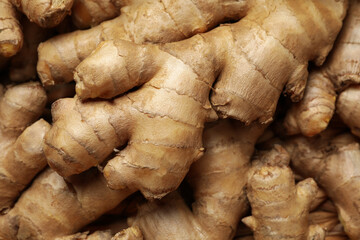Ginger
Ginger, scientifically known as Zingiber officinale, is a flowering plant whose rhizome, commonly known as ginger root, is widely used as a spice and for its medicinal properties. Native to Southeast Asia, ginger has been an integral part of traditional medicine and culinary practices for thousands of years.


Ginger plants grow about 3 to 4 feet tall and have narrow, green leaves and yellow-green flowers. The most notable part of the plant is its rhizome, which is knobby and pale brown on the outside with a yellow, fibrous interior. Ginger can be harvested about 8 to 10 months after planting. The rhizomes are dug up, cleaned, and dried or used fresh. Younger ginger (around 5 months old) is less fibrous and milder in flavor, often used for pickling or fresh consumption.
Health Benefits
Ginger has been used in traditional medicine for centuries and offers numerous health benefits:
- Digestive Health: Promotes digestion and relieves symptoms of indigestion and nausea.
- Anti-inflammatory: Reduces inflammation and pain, particularly in conditions like osteoarthritis.
- Antioxidant Properties: Protects cells from oxidative stress and may reduce the risk of chronic diseases.
- Anti-nausea: Effective in reducing nausea and vomiting, particularly during pregnancy or chemotherapy.
- Immune Support: Has antimicrobial properties that can help fight infections.

